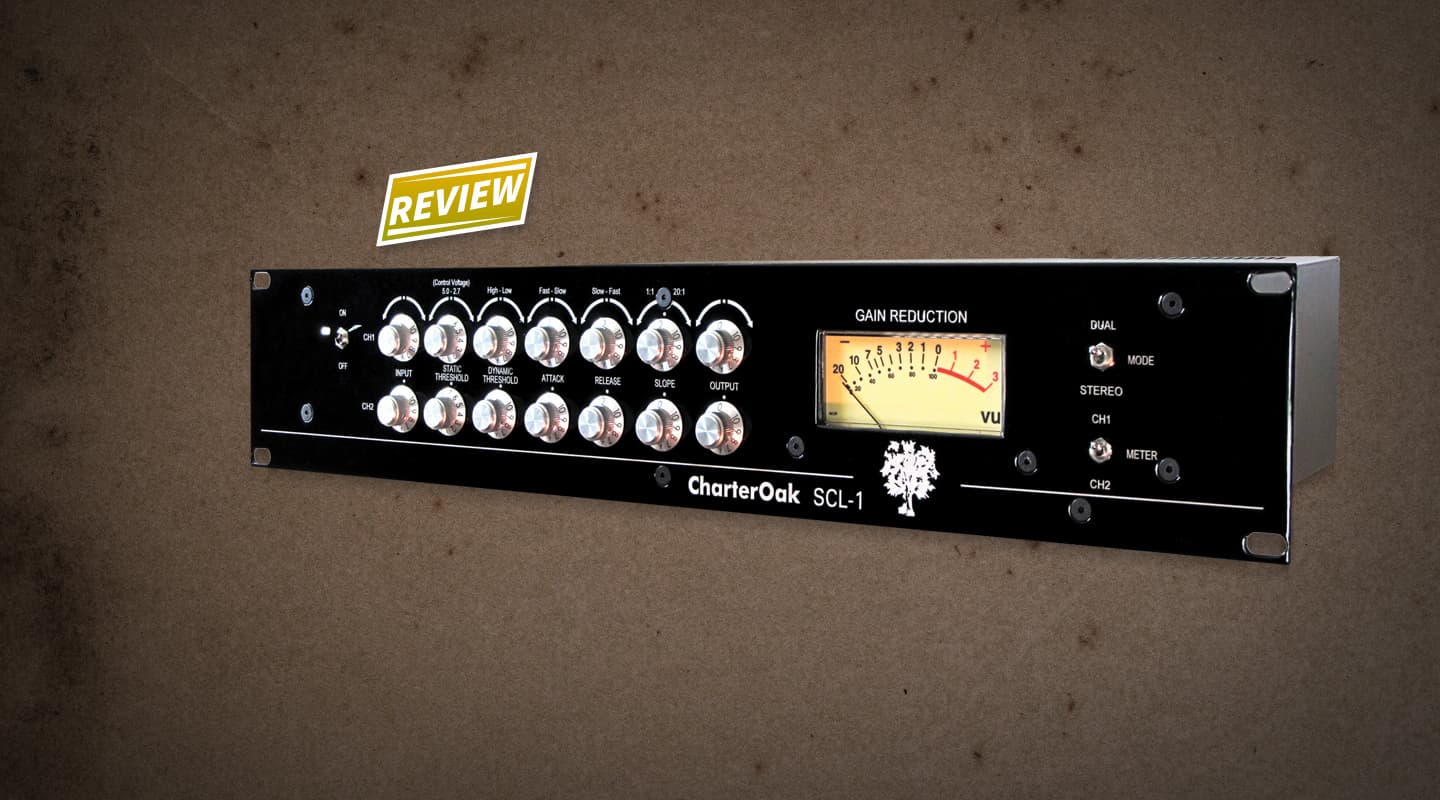
Review: Charter Oak SCL-1 Compressor
A compressor that crosses the threshold twice without leaving a trace, just don’t ask it to pump.
If there was ever to be a Jedi-style school for audio ninjas this would surely be one of their mantras — ‘With great dynamics control comes great responsibility.’
I can see a robed padawan quietly meditating before a pair of giant futuristic VU meters and then weighing his choice, hand hovering over a bank of outboard compressors… What shall it be this time? The API? The Al Smart? Perhaps the Amek? What of the ELI Fatso, the JML MAC or the Tube-Tech? A dozen sonic blueprints present themselves, with both desirable and undesirable compression artefacts, transient responses and tonal characteristics. In a bold move, the apprentice’s hand rests upon the controls of an unheralded contender, one that doesn’t claim to colour or drive the sound in any particular direction but offers an astonishingly transparent path to dynamics control with no unpleasant side-effects or tonal compromise — the Charter Oak SCL-1.
SOFT LANDING
With the SCL-1, Charter Oak’s head honcho Mike Deming clearly set out to honour the audio ninja’s compression mantra. His self-imposed task was to build a stereo compressor capable of handling mix bus duties without introducing all the artefacts we often associate with generously applied program compression — pumping, rush-up after rests, transient smearing and distortion et al. In order to succeed at such a perilous mission the SCL-1 utilises an unusual topology built around a parabolic average charge curve in the rectifier circuit. Using the Dynamic Threshold control to set the circuit’s sensitivity, the threshold varies according to not only the incoming signal but also the capacitor charge held over from the previous moments of musical input — effectively creating a continuously variable ‘soft landing’ back to average program level.
In addition, the SCL-1 provides a separate Static Threshold control that is used to raise or lower the control voltage and thus control the amount of swing between peak and average levels — acting as a hard/soft knee control.
Using these two controls and tweaking the attack and release settings it is possible to grab and control big transients in an effective way while the body of the mix sails through on its own more gentle dynamic trajectory. While I can hear the dance fraternity groan as whole mixes fail to duck momentarily after each kick drum wallop, there are many styles of music where this kind of transparent dynamic control is an absolute godsend. For acoustic and classical mixes, indeed any mix situation where no extra colouration or ‘compression effect’ is required, the Charter Oak brand of dynamic control has undeniable benefits.
NEED TO KNOW
ALL CLEAR
My first experiences with the SCL-1 were on some fairly complex and dynamic folk-rock material. I followed the manual’s instructions and first calibrated the outputs of my converters to the unit by running reasonably loud program material at +4dB output levels. Charter Oak recommends that the Static Threshold control is set at seven and left until the user is happy with all other aspects of the compression chain. Once this happens the control can be tweaked in the manner of a hard/soft knee control to fine tune things at the end of the process. By its very nature, a transparent dynamics controller makes the adjustment and tuning of attack, release and sensitivity thresholds a more subtle task and I found I needed to concentrate and really use my ears to hear all the nuances. After a bit of time and experimentation with the device I was achieving extremely pleasing results with expanded detail and RMS power in the body of the mix and effortless control of more unruly transients. There was also a definite smoothing of the whole soundstage and a sense of solidity about the mixes that to my mind showed the benefits of the unit’s all-analogue design. Using the attack and release controls allowed for some very nuanced shaping of the rhythmic content and, like a lot of truly high-end gear, I found it hard to make this compressor behave in anything but a very musical way.
I found it hard to make this compressor behave in anything but a very musical way
SOME LIKE IT HOT
It is worth noting that the SCL-1 loves a hot signal and can effortlessly cope with 10dB or more of gain reduction. The sweet spot seems to be at around 5dB of gain reduction but there’s no need to stop there, the over-designed component tolerances, sturdy PSU and transformer outputs are more than equal to the task of staying on target regardless of how much juice is applied.
Moving to more of a mastering-style chain, I hooked up some quality EQs pre and post compression and did some tweaking on some heavier musical styles as well as some gentler ambient tracks. Again the SCL-1 came up trumps with its ability to fine-tune the transient response and the relationship between peak and average dynamic levels. Again I was impressed by the tonal transparency of the mixes even at heavy compression settings. There really was no noticeable change in tops, mids or bottom end and this of course explains the lack of the increasingly ubiquitous high-pass filter circuit — it simply isn’t required. Finally I switched from stereo to dual mono mode and ran vocals and electric bass through the unit, once again coming away very pleased with the results. No matter what I threw at it or how hard I drove the unit, the result were never less than sonically pleasing and I’ve got to admit to being very impressed by Charter Oak’s offering. The SCL-1 is undeniably a transparent high-end device that delivers on its promise of minimal artefact compression.
















RESPONSES